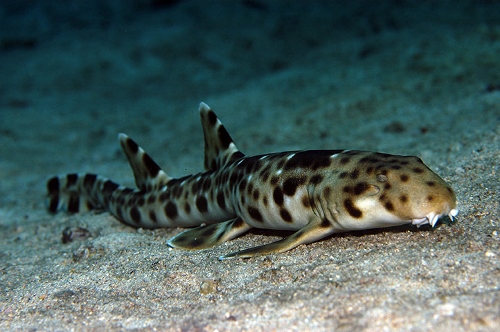Conservation Physiology: a Multidisciplinary Approach to Protecting Species

Epaulette Shark. Photo credit: BBC
The way in which an animal moves is essential to its survival. Hunting, escaping, migrating and mating are all made possible through the various locomotor strategies that animals employ. As a biomechanist, I study the physiology and mechanics of animal locomotion, gaining knowledge of how and why animals move in the way that they do. Through the study of animal locomotion, researchers can understand an animals economy of movement, learning how they get from a to b in the most efficient way possible.
Conservation physiology looks to quantify a species functional and mechanistic responses to environmental changes that they may experience in their habitat, allowing us to learn how resilient they could be to these changes, or how detrimental they could be to the long term survival of the species. Based upon ecological and physiological theory, conservation physiology looks to take a multidisciplinary approach to research, incorporating data from both field and laboratory based studies to gain an understanding of an organisms response to anthropogenic threats to its ecosystem.
Conservation Physiology is an online, fully open access journal published on behalf of The Society of Experimental Biology. It aims to bring together research from around the world which could be used to assess a species ability to respond to environmental changes, and allow us to take action if necessary. In addition to this, conservation physiology looks to support research on refining strategies to rebuild populations, restore ecosystems, inform conservation policy, and manage living resources. The overall aim is to determine the degree of threat to a species and help to establish which areas of conservation should take priority.
Examples of the research involved with the journal include a paper recently published on the epaulette shark, (Hemiscyllium ocellatum). The study looked to determine the affect of increased carbon dioxide levels on larger apex predators, such as elasmobranchs, which includes, sharks, rays and skates. One of the projections of increased atmospheric carbon dioxide is a concurrent increase in carbon dioxide levels present in the water. The epaulette shark lives on shallow reefs and will often experience short periods of environmental hypoxia and elevated levels of carbon dioxide. This is especially common during low tides where they might find themselves in isolated lagoons for short periods of time. They have even been known to exit the water completely and crawl across land to reach neighboring pools of water.
No research had previously been done on the effects of prolonged exposure to increased levels of carbon dioxide in these sharks, so a research team from James Cook University exposed sharks to two near-future predicted carbon dioxide levels for a minimum of 60 days. Following the treatment the team then measured some key aspects of their respiratory physiology. The results showed that the sharks respiratory function had not been affected by the long term exposure to elevated carbon dioxide levels, leading the researchers to propose that the epaulette shark would be fairly resilient to future changes in its habitat bought about through an increase in atmospheric carbon dioxide levels. The authors were keen to point out that although these results are encouraging for the epaulette shark, they could not be extrapolated to pelagic sharks that do not experience such extreme changes in their environment.
But it’s not all good news coming from the research being published. As ectotherms, the behaviour and lifestyle of animals such as turtles, sea snakes and crocodiles are closely linked to environmental temperatures. A team from the University of Queensland recently released the results of their study looking at the temperature affect of diving habits in juvenile saltwater crocodiles (Crocodylus porosus).

A juvenile saltwater crocodile. Photo credit: DimetroJohn
One key behaviour in these young animals is is diving, it enables them to hunt, avoid predators, rest and socialise. To assess the animals ability to adapt to predicted future temperature changes, researchers measured the average dive times of 11 juveniles that had been exposed to one of three temperature regimes: current summer, 28 degrees C; moderate climate warming, 31.5 degrees C; and high climate warming, up to 35 degrees C. They found that whilst all the animals studied dived at the same frequency and to the same depths, the time that they spent submerged differed significantly. In 28-degree water they spent an average of 36.8 minutes underwater, while animals diving in 31.5 and 35-degree waters spent an average of only 23.5 and 21.3 minutes submerged, respectively. The researchers also assessed to crocodiles dive response to a frightening noise, dubbed a ‘fright-dive’, and found that submergence times halved with every 3.5-degree water temperature increase. The researchers concluded that the shorter dive times were bought about due to the fact that oxygen stores of depleted more rapidly at higher temperatures. This difference in behaviour would clearly have profound affects on the lifestyle of this species, and suggest that future climate change could be very detrimental to long term survivorship of these animals.
The results of research like this demonstrates the importance of a collaboration between research of all types and backgrounds, and the ongoing work of physiological research to the way in which we approach conservation issues moving forward. Hopefully this kind of work will enable us to be better prepared for the future and encourage people to take the right action accordingly.
That is one tiny croc, and already looking hungry. Love your website. Thanks for liking my Tickle Proof Sharks! Warmly, Brenda
LikeLike